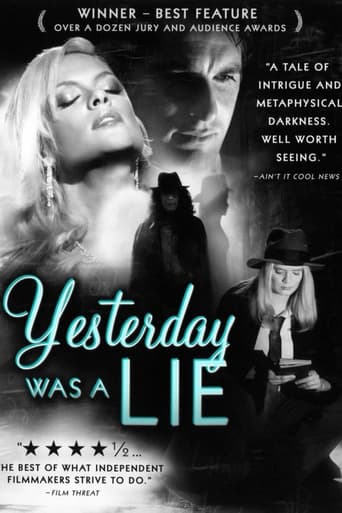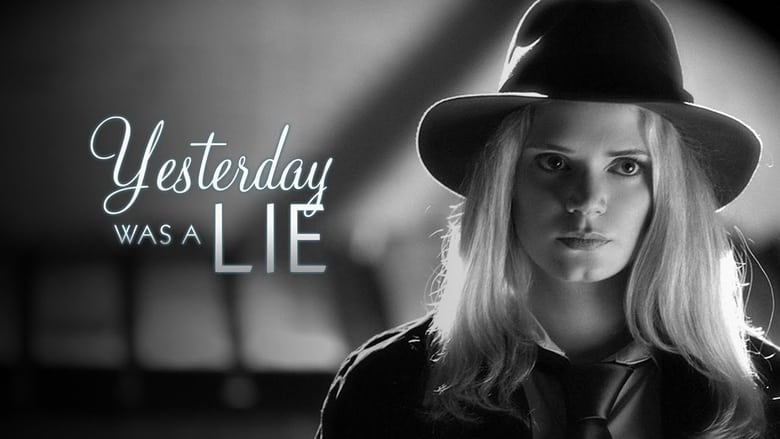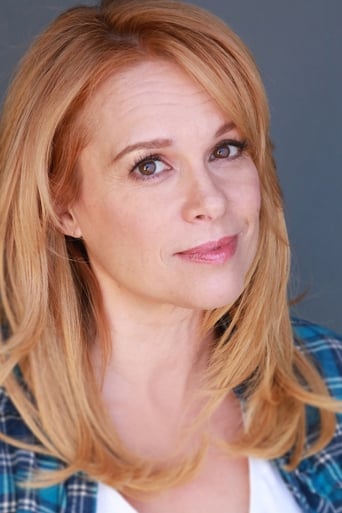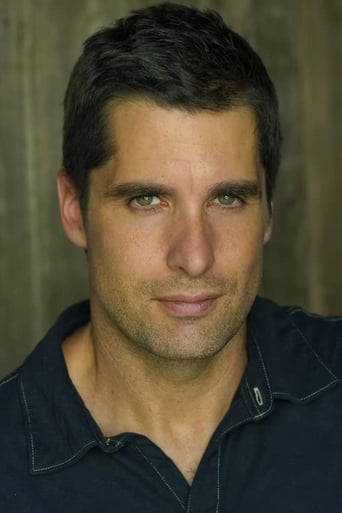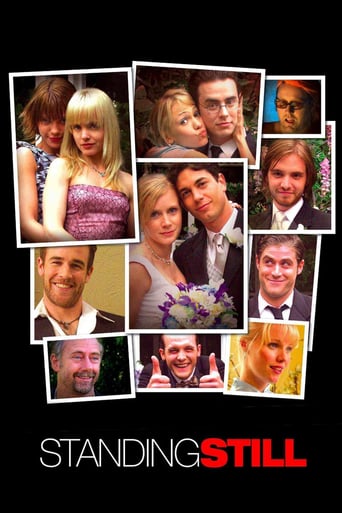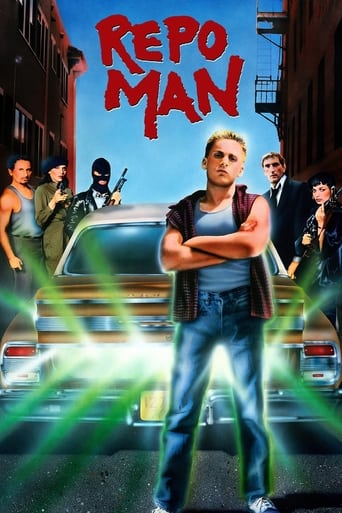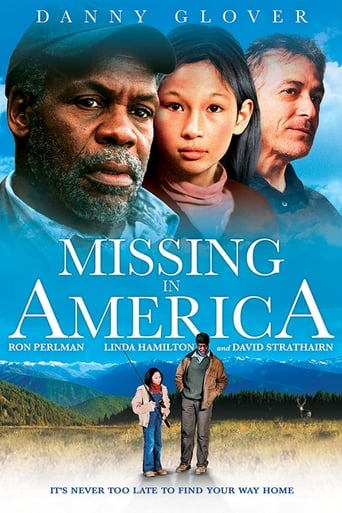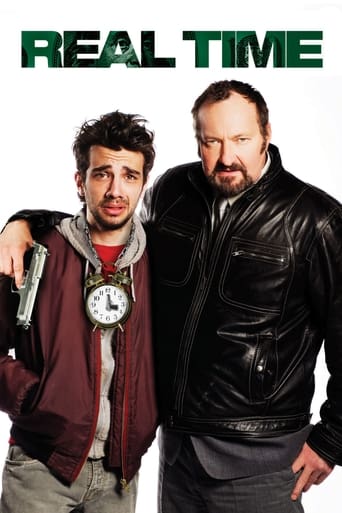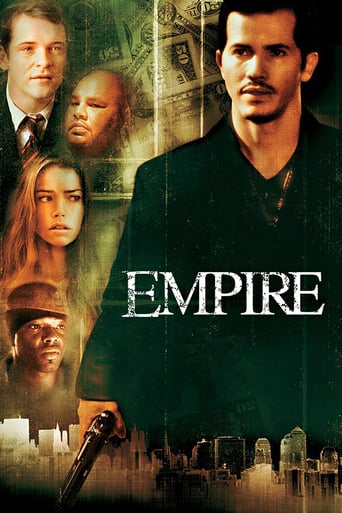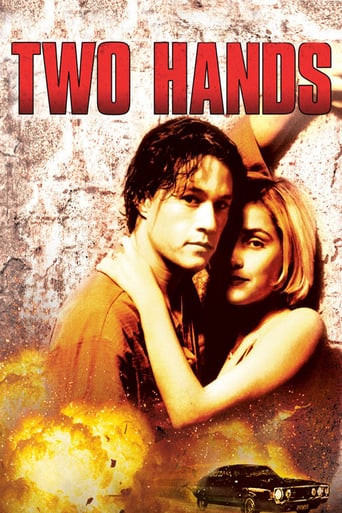Yesterday Was a Lie (2009)
Hoyle, a girl with a sharp mind and a weakness for bourbon, finds herself on the trail of a reclusive genius. Along the way, her reality becomes disconnected and surreal. Her loyal partner and an ethereal lounge singer help her along the way, but ultimately she must turn within and confront her own shadow.
Watch Trailer
Cast
Similar titles
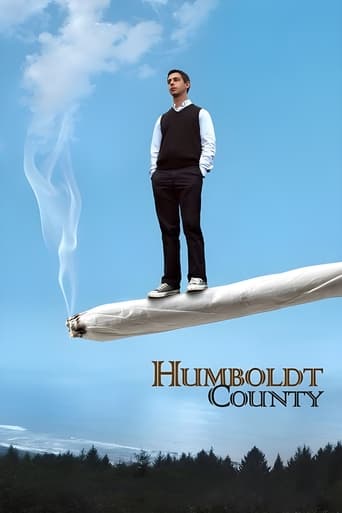
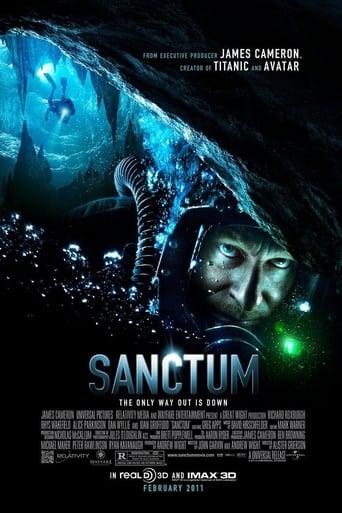
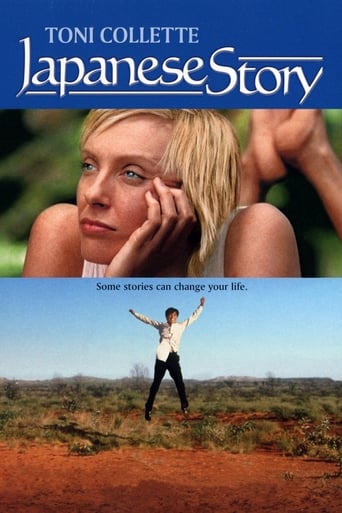
Reviews
People are voting emotionally.
Let's be realistic.
The storyline feels a little thin and moth-eaten in parts but this sequel is plenty of fun.
The tone of this movie is interesting -- the stakes are both dramatic and high, but it's balanced with a lot of fun, tongue and cheek dialogue.
To describe a film that is different from anything you've seen is difficult. Its style is seriously, consummately neo-noir, the subject matter seems to be that of the hard-boiled detective genre, but as the plot unfolds we realize that we are seeing speculative science fiction. The heroine, Hoyle, seems to be a private detective, a female incarnation of Philip Marlowe perhaps, and she is searching for both a man, who turns out to be her ex-boyfriend, and for a notebook containing metaphysical research by Nazi-era German scientists. Throughout her investigations she repeatedly encounters a haunting, doppelganger-like woman who first appears as a sultry nightclub singer, but turns out to be much more. To add to her confusion, Hoyle seems to be experiencing her life in disjointed pieces that are out of sequence and someone, perhaps herself, is trying to contact her from another time.Definitely not for the popular audience (if the first ten minutes don't grab you, this one isn't for you), Yesterday Was A Lie will appeal to those who are drawn to the off-beat, experimental auteur film, Gothic science fiction and/or neo-noir film making. The digital black-and-white does not really replicate the lush style of the 1940's, but instead creates it own atmosphere, its own intriguing and stylish world of fog-enshrouded half light. Every segment of the film is crafted with great care and photographed with great artistry; the writer-director James Kerwin has really created something quite wonderful. The stars, Kipleigh Brown as Hoye and Chase Masterson, who produced the film, bring it compellingly to life. (They are also two alluring gals.) Redolent of the original Outer Limits, the darkest of '40's film noirs, Humphrey Bogart, and a bit of Sapphire and Steel, it nevertheless stakes out its own unique territory. If you're not turned off by references to Jungian psychology, Dali surrealism, the poetry of T.S. Eliot, and speculations on alternative realities and the nature of time, let this film lead you into its dream world, but be warned, you will need to, and want to see this film several times.
I had been waiting for quite a while for Yesterday was a lie. Modern noir is rare and I hadn't seen anything of note since 2005's Brick. Despite going into the film with high hopes, Yesterday was a lie fell short of it's mark. Their seemed to be such an heavy emphasis on the stylistic elements of the classic noir film that it over did it. From the swanky Jazz to the high-contrast black and white, it all was just too much. This over-the-top noir style seemed to ease by about the halfway point of the film which helped. The character Hoyle, with her hair flowing out from under her Fadora wasn't believable. Hoyle along with the singer, played excellently by Chase Masterson, were easily confused since both were so close in appearance. Since this was a movie about moving backwards and forwards through time, one was left wondering if Hoyle and the Singer were meant to be the same person. Also, noir works when we see that point when the main character either makes a bad decision of has one thrust upon them. That is the turning point of a great story. This story didn't seem to have that. If it did, it was lost, relying on sexy women and dress to carry the day. Also this film missed the mark in great dialog. One usually hopes for those great comeback lines and expressions (that we all wished we had said) to carry these films. All and all the acting was fine but this film failed in the directing and editing. It was fun to see the effort but this fell short of it's mark.
A love story for cerebral cineastes. A delight to watch after dinner with a philosophy professor friend and three glasses of wine, and it belongs right up there with your volumes of Wittgenstein. Upon more sober viewing, my analytic mind felt challenged. Actually, this reflects the film's purposeful plotting. Being a psychiatrist, let's see what I can offer. The film exemplifies Godard's maxim that all it takes to make a movie is a girl and a gun. In this case the lead female characters are two lovely blondes. Each so cleverly resembles the other that one is reminded of Discreet Object of Desire, the surrealist flick where two actresses played one character. But adding layers of complexity here, these twin-like actresses are also playing the left and right sides of the brain of the feminine anima of one male character. Got that? They all meet at the Pigeon Hole lounge. The first character is the young Hoyle, a feminine Bogart/Sam Spade analytic detective - the left brain. Like Sam she likes the gin and the story straight. The second is a sultry, un-named singer who has a familiarity with the poetics of T.S. Eliot - the brain's right. Her music is entrancing, her wit intuitive and nonlinear. Together, these two provide the counterpoint of Jung's anima to the male animus of the main character, Dudas. Whether Hoyle and her counterpart, Singer, convince us they are our anima is irrelevant as we so want them to be part of us. These lovelies draw us ever so seductively into imagining the dark recesses of our own beautiful unconscious, despite whatever misgivings. All we're here for is love, we are told. The shape of the universe is a relationship - functional or otherwise - whether with our inner parts or with our fellow beings. This makes for a strange little Jungian romp in luscious b&w footage. This is Lynch with an underlying premise. Somewhat like the film Pi, this low budget beauty was made at the cost of Pi (made at $60,000) times pi! First time director James Kerwin makes for a Jungian fortune teller taking us on a trip to disentangle or re-entangle our male and female halves. Kerwin is an urban shaman who shows us the conventional mind as a "surge suppressor". Our conscious minds filter small broken bits of time in a lame attempt to tell a story. Does it matter whether they "add up"? Beginning with some obvious allegory, the locks are broken off the allegorical unconscious and our character, curiously named Hoyle bravely walks into a poetic film noir journey to confront the Self. (Hoyle seems named after transcendental astronomer/physicist Fred Hoyle who was deeply intrigued by the "Anthropic Principle" of nature.) We begin with a look at Dali's surrealist masterpiece Persistence of Memory in a hallway. They meet Schrödinger's cat, the parable of which tells us there are opposite angles on everything and only by choosing do we arrives at any definitive perspective. Free Will is discussed. The film reveals a Jungian Fenestra Aeternitatus, a window to the eternal, that our characters need to navigate. A variety of other cutting edge consciousness theories are peppered throughout the film to spice the intellectual interest of the knowledgeable viewer, including pondering Planck's constant, a number describing the fundamental vibration at the Ground of Being. For those less informed, the film literally goes back to the psychiatrist to explain itself. Jung, we are told, said a man needs to project his animus onto the feminine anima in order to unlock the secrets of the universe. This is a film for men who are in need of seeing themselves and for women who want a deeper look into those men. What does a man see in himself as a woman? Hoyle goes into a dream within a dream (hasn't everyone had at least one of these?) to contact her animus, Dudas, who has a notebook of important thoughts or ideas. Meanwhile we are constantly asked, what if our theories, concepts of self, and common sense don't add up? And what does that tell us about our relationships? And what is the nature and consequence of the loss of "relationship"? The right-sided feminine asks the questions. Left-sided Hoyle tries to read the tea leaves, the pattern in the chaos. Hoyle and her doppelganger meet another aspect of their animus, a scientist who explains the nature of time and who feels these two sexy blondes are "better" and "better". They are also the choices that interface with reality. They will help us overcome our own guilt about our very existence and the broken promises to ourselves and to others. A deep understanding of time is seen in this film's Feynman diagram writ large in cinema. Physicist Feynman showed everything else might be one mind/particle bouncing backwards and forwards in time, appearing as each and all of us trying to make contact with every part of experience over eternity, the very fabric of time. This reach for the eternal is countered by the Shadow, the dark side, who delivers a bit of lead poisoning in the form of bullets. Death's shadow is a terrifying/exhilarating lockdown on the many-sided reality of now, it haunts our Selves. It occurs when we bring our stories to a halt. We need to let go of our life-text and grab onto our fuller selves, leaving our memories to be what they are and move on to script ourselves anew. This film is an ultimate romance with "The Other", a mix of the cosmos and the chaos, the order and the disorder, the male and the female. In this cocktail lounge of our emotions, letting go of our primordial selfishness lets our unconscious sing its own songs, reconciling the Self to itself. And pay attention to terrific music in here. Chase Masterson sings beautifully the lounge songs of our longing.
This is not a movie to miss if you hear of it coming to a convention or festival near you. See it for free before you have to pay for it! There are many types of film fanatics that should love this movie. It can be compared to so many different types of films and film makers. All Sci-Fi fans should like the film because of the alternate realities/parallel universe themes. You will also notice the film takes on a very non-linear plot. For some, this is confusing. However, it only adds to the delight of watching this film. This non-linear film making reminds me of films by Quentin Tarantino. This film could certainly be one that can viewed multiple times and enjoyed over and over.This film was originally shot in color and then desaturated in post production. The black and white or "noir" aspect of the film adds its own personality. Color would not have worked for this film because it has a 1940-1950's "Bogart" theme to it. You see Hoyle play the part of the investigator playing the part of the crime detective so well. She plays it as a female; which no doubt, offers a refreshing way to see a detective role played.The convention I attended was the first Con for me. When I saw the Films listed I read more about this film and it looked very interesting. It met and beat all my expectations. I had the chance to meet Chase Masterson playing the Singer and Director James Kerwin. There was a great panel on the film and many questions were answered. Take a look at the cast and you will notice some familiar faces in the Sci-Fi family. If I could only see this film in the area again or buy a DVD I would! See it for free while you can!Have an open mind and see it at a convention or festival now!
